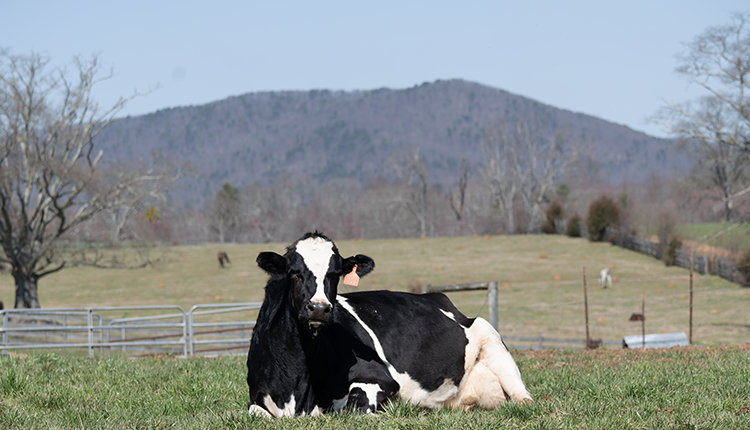
Genetic evaluations to strengthen resistance to six health disorders are available for Brown Swiss animals beginning August 9, 2022. The six health traits published by the Council on Dairy Cattle Breeding (CDCB) are displaced abomasum, ketosis, mastitis, metritis, milk fever, and retained placenta.
Official evaluations for these six traits have been available from CDCB for Holsteins since April 2018 and Jerseys since April 2020. After a recent feasibility analysis, the same pipelines and processes used for Holstein and Jersey health traits were extended to include Brown Swiss.
To streamline selection decisions, these health traits are incorporated into the national genetic index, Net Merit $, which includes more than 40 traits such as milk, fat and protein yield, livability, fertility, and conformation, weighted according to the traits’ relative economic value. In the Net Merit formula, the six health traits are combined, with a total weight ranging from 1.7% to 2.1%, depending on the breed.
Health evaluations are an important tool to help producers select healthier, more profitable animals. Certainly, cows with genes that keep them healthy are more profitable than cows with health conditions that require extra farm labor, veterinary treatment, and medicine.
Evaluations based on national data
Like other genetic evaluations produced by CDCB, the health evaluations are derived from national data recorded in Dairy Herd Information (DHI) herds and transferred to the national cooperator database managed by CDCB.
Although the health traits have lower reliability on average than traits such as yield, reliabilities continue to improve as more data are accumulated.
Accurate genetic evaluations are possible through continued cooperation among many industry sectors. Dairy producers are most critical for their active and consistent on-farm reporting of health events. The Dairy Records Providers and the Dairy Records Processing Centers facilitate the transfer of health data from DHI herds to the CDCB database. Then, strict editing and proven methods are applied to ensure the most reliable data is included in the genetic evaluations. The foundational research and development for all U.S. genetic evaluations has resulted from the long-standing collaboration between CDCB and the USDA Animal Genomics and Improvement Laboratory.
Because of this industry-wide cooperation, strong foundational research, and a robust national database of animal genotypes and phenotypes, dairy herds worldwide have access to genetic tools to help improve cow health, along with productivity and efficiency.
More about the CDCB health traits
The CDCB health evaluations are defined as disease resistance. The resulting Predicted Transmitting Abilities (PTAs) are presented as percentage points above or below the breed’s average resistance for that disorder, with more positive values being favorable. The larger the positive values, the more favorable the genetic resistance to the disorder.
Let’s look a bit deeper at mastitis. Assume the Holstein resistance to clinical mastitis is 90%, which represents a 10% incidence rate. If Bull X has a PTA of +3.0 for mastitis resistance, daughters of Bull X would, on average, be more resistant to mastitis by 3 percentage points more than the population average. The resistance rate among Bull X’s daughters should average 93% (90 + 3), given a significant number of daughter records. This can also be interpreted as an incidence rate equal to 7%.
Alternatively, let’s assume Bull Y has a PTA of -4.0 for mastitis resistance. His daughters would be expected to have an average resistance equal to 86% (90 – 4) as observations are accumulated or, conversely, a mastitis incidence rate of 14%.
Differences in extra costs and lost milk income from these two alternatives equates to a hefty difference in herd income.
Read here for more about the research and development of CDCB health traits. Specifics about the Brown Swiss health traits, phenotypic records and reliabilities can be found on the CDCB website.
The bottom line
The genomic revolution of the past decade has considerably enhanced the rate of genetic improvement and our ability to develop new, important traits. Health of dairy cows continues to improve, and continued progress can be made through genetic selection for disease resistance. Clearly, today’s consumers are requesting assurances of sustainability and animal well-being as they make food and beverage choices, and genetic selection provides tools for continued progress of U.S. dairy.








